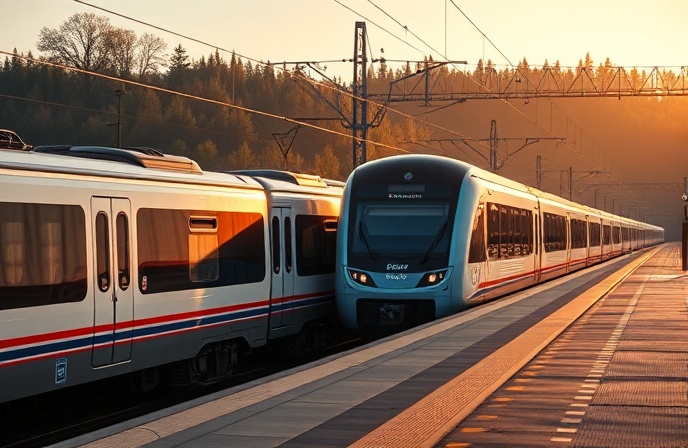ETCS Upgrade: Transforming TransPennine Express

Upgrading the TransPennine Express Network: Implementing ETCS on Class 185 Trains
This article explores the significant upgrade of the TransPennine Express (TPE) Class 185 train fleet with the European Train Control System (ETCS), a key component of the Transpennine Route Upgrade (TRU) project. The TRU is a multi-billion-pound initiative aimed at drastically improving rail connectivity between major cities in Northern England, including Manchester, Huddersfield, Leeds, and York. This modernization effort goes beyond simple technological advancement; it represents a crucial step towards enhancing safety, increasing capacity, and improving the overall reliability of the rail network. The integration of ETCS is not merely an add-on, but a fundamental shift in how the railway system operates, promising significant benefits for passengers and the railway industry as a whole. The following sections delve into the technical aspects of the ETCS implementation, its impact on operational efficiency, and its contribution to the wider goals of the TRU project.
ETCS Implementation: A Technological Leap Forward
The core of the upgrade lies in equipping the Class 185 trains with ETCS, a sophisticated digital signalling system. Unlike older, track-based systems, ETCS relies on continuous communication between the train and a central control system. This continuous communication provides real-time updates on speed limits, track occupancy, and other critical operational data directly to the driver’s cab. This eliminates the reliance on traditional trackside signals, allowing for more flexible train operation and increased capacity. The implementation is a complex undertaking involving the collaboration of multiple stakeholders, including TPE, Eversholt Rail (the owner of the Class 185 fleet), and Siemens Mobility, responsible for the physical installation and integration at their Ardwick depot. This partnership highlights the collaborative nature of such a large-scale project, emphasizing the importance of coordinated effort across the industry.
Operational Efficiency and Enhanced Safety
The benefits of ETCS extend beyond simple technological improvement. By allowing trains to run closer together while maintaining safety, ETCS significantly increases the capacity of the existing infrastructure. This translates to more frequent services and reduced journey times for passengers. Moreover, the real-time monitoring capabilities of ETCS significantly enhance safety. The system continuously monitors train speed and braking distances, ensuring adherence to speed limits and preventing potential collisions. The system’s ability to provide immediate warnings and automated braking interventions adds a crucial layer of safety to the railway operation, contributing to fewer accidents and incidents.
The Broader Context: Transpennine Route Upgrade (TRU)
The ETCS upgrade is not an isolated project; it is integral to the wider TRU initiative. The £415 million ($553.4 million) government investment in the TRU underscores the project’s importance in national rail infrastructure development. The TRU aims to transform rail travel in the North of England, boosting economic growth and improving connectivity. The ETCS implementation is a crucial step in realizing this ambition by providing a modernized signaling system capable of supporting increased passenger numbers and improved service reliability. The selection of Jacobs by Network Rail as the technical services integration delivery partner further underscores the magnitude and complexity of the TRU program.
Conclusion: A Foundation for Future Rail Improvements
The integration of ETCS on the TransPennine Express Class 185 fleet represents a significant milestone in the modernization of the UK’s rail network. This upgrade, a crucial element of the Transpennine Route Upgrade (TRU) project, offers multiple benefits, including enhanced safety, increased operational efficiency, and improved passenger experience. The move to digital signalling technology, such as ETCS, represents a move away from outdated systems, leading to a reduction in delays and a more resilient rail network. The ability to run trains closer together, without compromising safety, will substantially increase capacity on existing lines. This is particularly critical in high-demand corridors like the TransPennine route. The success of this project provides a strong case study for other railway networks contemplating similar upgrades, showcasing the long-term benefits of investment in modern signalling technology. The collaboration between TPE, Eversholt Rail, Siemens Mobility, and Jacobs highlights the importance of a coordinated approach to large-scale infrastructure projects. The successful completion of this upgrade will pave the way for further improvements in rail travel across the UK, showcasing the benefits of strategic investment in modern railway technology and setting a benchmark for future infrastructure development.






